Shulgin’s Sulfur Symphony - Part I
The 2C class of psychedelic compounds first researched by Alexander Shulgin encompasses a wide range of mental experiences, but one substitution in particular seemed to resonate with the magic seen in legendary compounds like mescaline. Thioalkylation at the 4-position produced the famed 2C-T-2 and 2C-T-7, compounds noted for an almost overwhelming visual character with echos of the cosmic choir, and a dismantling of the ego more prominent relative to the perceptually focused halogenated and alkylated 2Cs. This unique experience caused Shulgin to focus his substantial talents on sulfur based substitutions at the 4-position for a period of time, producing a large number compounds named in the format 2C-T-x. The first twelve are outlined in this post.
One attribute of these compounds must be emphasized at the outset. Unlike the halogenated or alkylated 2Cs, sulfur substitutions appear to be correlated with varying degrees of MAO inhibition, which can cause significant health issues up to and including death in extreme doses or in combination with other recreational drugs, particularly stimulants. These compounds were used safely in reasonable oral doses for twenty years among a qualified group of explorers, but the research chemical surge of the early 2000s introduced these compounds to an untrained audience in pure bulk forms. With resellers actively encouraged not to disseminate information on safer consumption due to legal pressures to maintain an appearance of “not for human consumption”, reckless dosing and routes of administration led to tragedy.
2C-T-2 has been sold widely, and has not been involved in any fatalities to my knowledge presumably due to less significant MAOI effect as judged by euphoric “push” relative to the other sulfur substitutions. 2C-T-7 can be considered the most popular of the group, and has nonetheless been involved in at least three deaths involving either excessive insufflated doses over 30mg, use in combination with stimulants such as MDMA or ephedrine, or both. The less popular 2C-T-21 has produced one death after an extreme oral dose (sticking tongue in full vial of pure compound).
The desire to experience the mental state produced by these compounds should be weighed with the intentions, ability, and risk tolerance of the end user. A society which allows the purchase of firearms with the assumption of responsibility should allow the same for self-exploration, but this is often not the case. If you are unfamiliar with the mechanism of risk of these compounds (ie MAO inhibition), if you are unable to weigh these compounds accurately, and if you are unwilling to respect the impact of route of administration, then an alternative should be selected.
2C-T (2C-T-1, 2,5-dimethoxy-4-methylthiophenethylamine) Active in doses of 50-150mg, this compound produces a euphoric psychedelic experience for 5-6 hours that nonetheless was described as “generic” by Shulgin. Lack of potency relative to other closely related compounds and the somewhat shallow mental state make this a rare find on the research chemical market.
2C-T-2 (2,5-dimethoxy-4-ethylthiophenethylamine) Active in doses of 10-30mg, this compound produces a 6-8 hour experience most notable for its intellectual introspection, mescaline styled visuals, and unholy ability at higher doses to cause physical distress including nausea during the first hour of the experience. Like mescaline, after the purge a sense of contentment develops and the experience then progresses naturally. 2C-T-2 first rose to wide fame after the banning of 2C-B, and was first sold by Dutch smartshops as a substitute in 1997. As it produced a much richer and deeper psychedelic experience than 2C-B, it did not have as wide an appeal on the club circuit, but still sold widely enough that it was eventually banned by Dutch authorities.
2C-T-3 (2C-T-20, 2,5-dimethoxy-4-(beta-methallyl)thiophenethylamine) Also known as 2C-T-20. Before working on the 2C-T series Shulgin investigated a similar series of promising compounds dubbed the Alephs, of which Aleph-3 was the beta-methallyl homologue. The synthesis of Aleph-3 was attempted, abandoned, and eventually forgotten. Years later the idea came to Shulgin again, and the beta-methallyl Aleph was begun anew along with the corresponding beta-methallyl 2C-T compound (2C-T-20). This led to the rediscovery of notes referencing the initial Aleph-3 synthesis attempt, and 2C-T-20 was renamed 2C-T-3 in order to maintain consistency with the Aleph project.
It is unclear if there was ever an “original” 2C-T-3 whose place was overwritten or shifted by insertion of the beta-methallyl. It is certainly an odd man out in the progression, as it would seem reasonable to place the n-propyl 2C-T-7 here after the ethyl 2C-T-2 and before the isopropyl 2C-T-4. A numbering system based on the previous Alephs appears to explain the gap, as perhaps the initial synthesis of the 2C-T-3 was simply left for later due to the increased difficulty relative to the alkyls surrounding it. The synthesis of 2C-T-3/2C-T-20 has never been completed according to public knowledge.
2C-T-4 (2,5-dimethoxy-4-isopropylthiophenethylamine) The isopropyl companion to the propyl substituted 2C-T-7. Active in doses between 8-20mg, it produces a long lasting change in mental state for 12 to 18 hours with a slight dissociative character. Human testing showed huge variance in responses, particularly in the subcategories of visual distortion and euphoric response. The inability to predict whether a 12+ hour long psychedelic experience would be euphoric and illuminating or dysphoric and anxiety ridden has contributed to a lack of recreational usage of this drug.
2C-T-5 (2,5-dimethoxy-4-cyclohexylthiophenethylamine) Has never been synthesized according to public knowledge, and was presumably based the similarly structured Aleph-5.
2C-T-6 (2,5-dimethoxy-4-phenylthiophenethylamine) Has never been synthesized according to public knowledge, and was presumably based the similarly structured and successfully synthesized Aleph-6.
2C-T-7 (2,5-dimethoxy-4-(n)-propylthiophenethylamine) Active in doses of 10-40mg with a duration of 8-16 hours, 2C-T-7 is perhaps the most popular of Shulgin’s sulfur substitutions likely due to a more consistent euphoric effect. A powerful psychedelic character lies underneath however, and initial hype about a easy to handle “candyflip” experience may have resulted in some overwhelming experiences. With nausea reported less frequently as a side effect in comparison to 2C-T-2, many cast 2C-T-2 aside as a shorter less euphoric 2C-T-7. This is not necessarily a valid critique, as the more euphoric mental state of 2C-T-7 often results in “sloppier” emotional analysis relative to the slightly more difficult and intellectual 2C-T-2. 2C-T-7 began its rise to fame in the summer of 1999 as Dutch smartshops began selling it in 7.5mg tablets dubbed “Blue Mystic” due to the success (and resulting ban) of 2C-T-2. Unsurprisingly, 2C-T-7 was quickly banned as well.
2C-T-8 (2,5-dimethoxy-4-cyclopropylmethylthiophenethylamine) Active in doses of 30-50mg and producing a 10-15 hour experience, this compound produces a mental state that many did not wish to repeat. Shulgin said in PiHKAL, “there are as many negatives as there are positives, and the particular substitution pattern is not one to set the world on fire.”
2C-T-9 (2,5-dimethoxy-4-(t)-butylthiophenethylamine) Active in doses of 60-100mg, it produces a 12-18 hour experience with significant peripheral body load and little psychedelic reward for the effort. Note that Wikipedia currently incorrectly refers to this as the n-butylthio substitution rather than the tert-butylthio referenced in PiHKAL, as the n-butylthio substitution should be referred to as 2C-T-19.
2C-T-10 (2,5-dimethoxy-4-(2-pyridylthio)phenethylamine) Synthesis was abandoned before completion, and has not been completed by others according to public knowledge.
2C-T-11 (2,5-dimethoxy-4-(4-bromophenylthio)phenethylamine) Synthesis was abandoned before completion, and has not been completed by others according to public knowledge.
2C-T-12 (2,5-dimethoxy-4-(1-morpholinothio)phenethylamine) Synthesis was abandoned before completion, and has not been completed by others according to public knowledge.
Sulfurous Samadhi, An Investigation of 2C-T-2 & 2C-T-7 by Murple, Feb 6, 2001.
Nichols, D. E. and Shulgin, A. T. (1976), Sulfur analogs of psychotomimetic amines. Journal of Pharmaceutical Sciences, 65: 1554–1556. doi: 10.1002/jps.2600651040
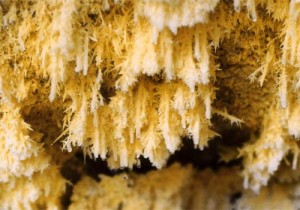
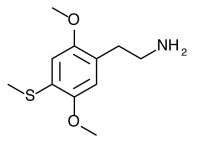
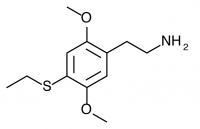
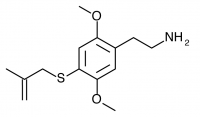

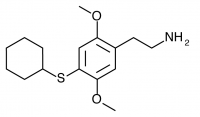
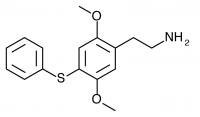
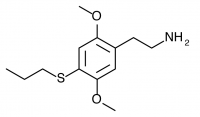
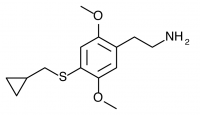

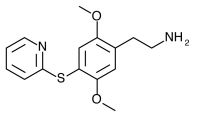

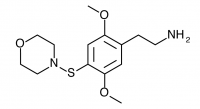


Hi Bill,
Congratulations for the work you’ve being doing here. I like the way you’re presenting the compounds in posts such as “The Halogenated 2Cs”, “The Alkylated 2Cs” or “Shulgin’s Sulfur Symphony” where you condense and reinterpret information from PIHKAL or TIHKAL but also add new material from the scientific community and the state of things in the RC scene. I also like the way you take care to explain the chemistry part and accompain it with images. This makes it much easier for people like me, that only have basic chemistry knowledge, to keep up and learn some new things. Keep it going.
As for what concerns this post. 2C-T-4 is currently around the RC scene, probably as a 2C-T-2 or 2C-T-7 substitute. Both times I tried it in active doses it gave me a consistent and more pronounced stomach discomfort than other phenethylamines. It is not a sufficiently nauseous feeling to make me vomit but rather a lingering tension. When still and relaxed I could focus on something else and forget about it. Though engaging in physical activities, such as dancing or hiking, made it more apparent which sometimes hindered me from enjoying these activities. The stomach discomfort comes along with the psychedelic effects at around t+2h and vanishes at t+4h (thus there is still a lot of time to enjoy the experience).
There are reports on Erowid and PIHKAL of similar effects though others find this compound more bearable than say 2C-T-7 or 2C-T-2. Having read many trip reports along the years it seems like some experimenters have a particular phenethylamine which really upsets their stomach. The strange thing is there isn’t a particular phen that creates this effect consistently in all individuals.
This is a topic I would like to read about (suggestion for Bill :P). Are all phens prone to cause nausea? What accounts for the variation between individuals: diet, genetics, …? Which are the mechanisms of action that provoke nausea: hitting the 5-HT receptors in the gastrointestinal system?
The majority of psychonauts are able to manage the phens nausea. Still if there was a way to ease it we could be turning many experiences into full positive ones right from the beginning. [If you want to puke go for Ayahuasca :D.] [Does ginger root work?.]
Regards.